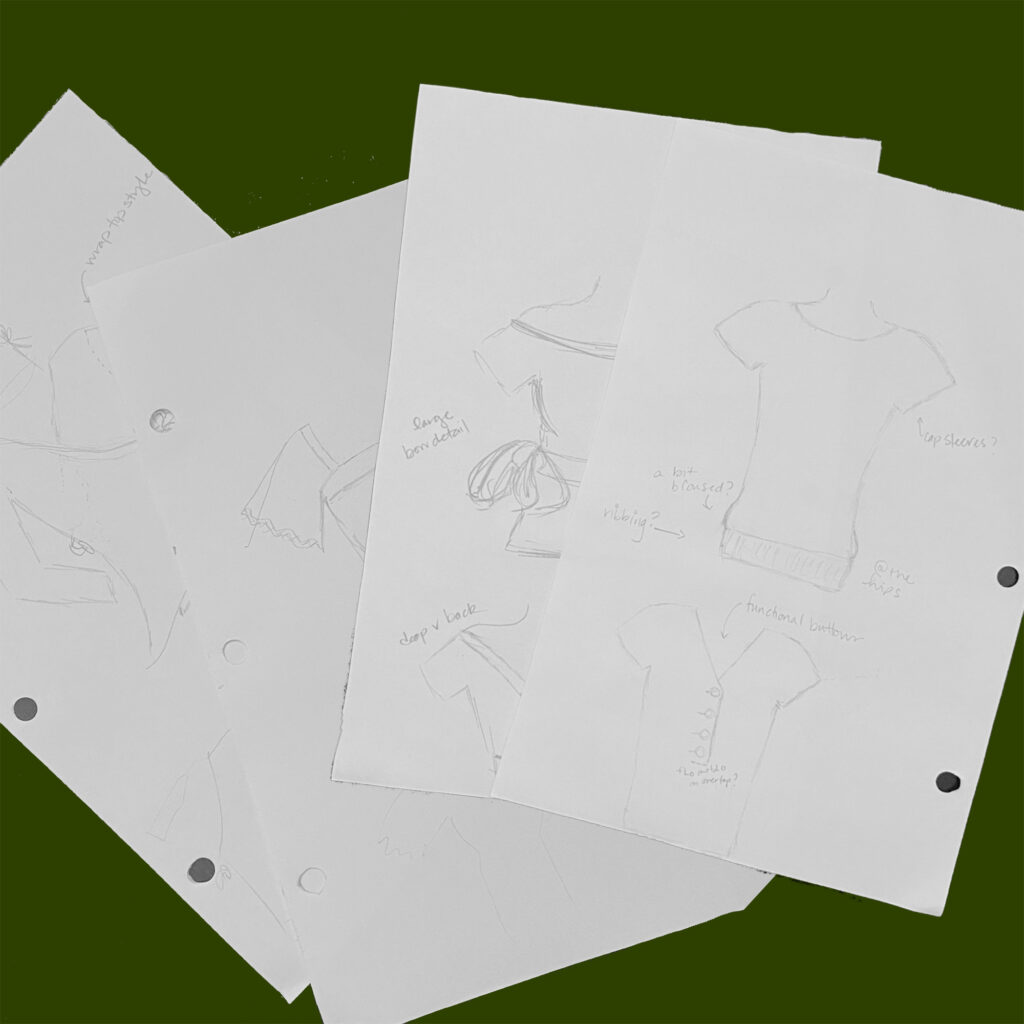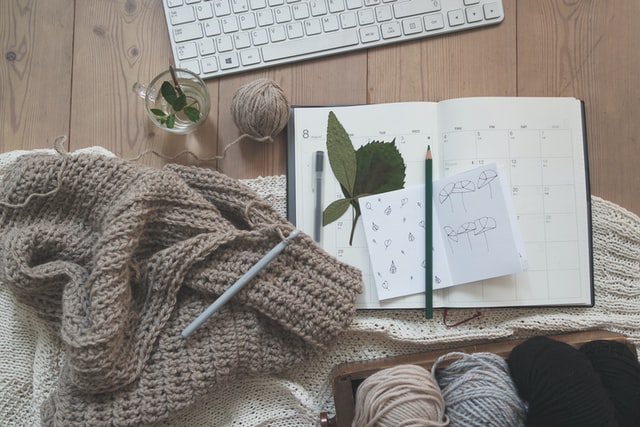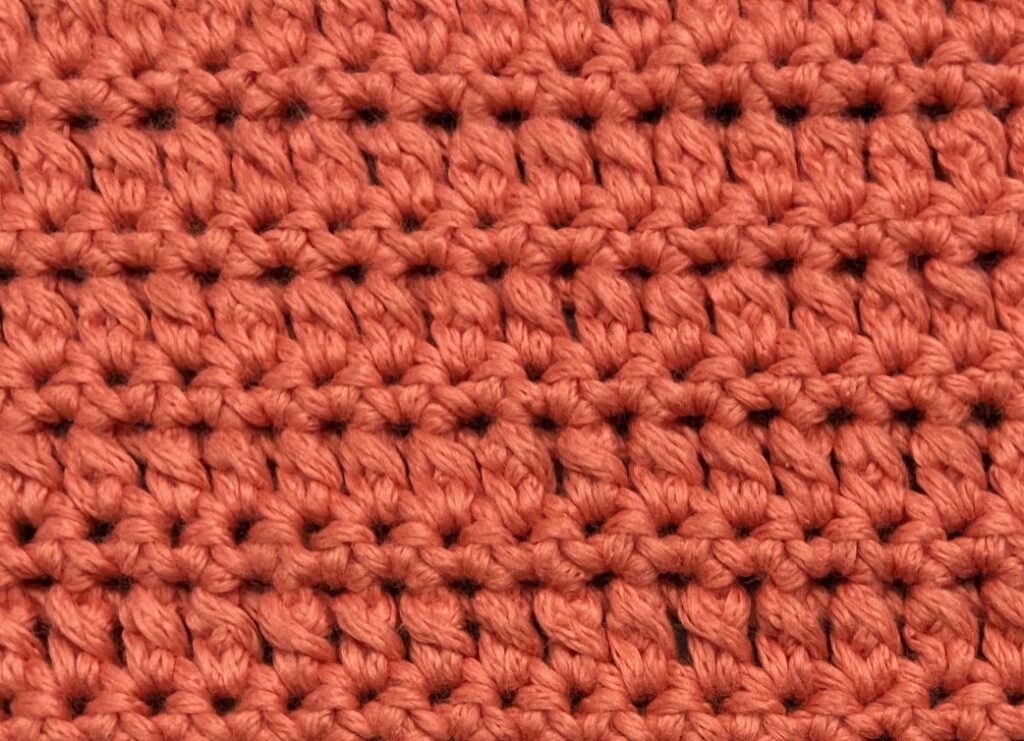Hello everyone! Welcome to The Learning Curve. This is the obligatory first post that must accompany any blog. This isn’t your typical blog but it calls for an introduction nonetheless. I am pursuing the Masters of Science in Fashion Business and Entrepreneurship from Lindenwood University. This blog has been fashioned as the directed project for my degree. The goal of this project is to learn the process of creating a pattern for a crocheted garment. The project ends with a polished, tested, and functional pattern with my journey detailed over a series of 6 blog posts. Additionally, it culminates with a newfound confidence on my ability to create crochet patterns.
What is Crochet?
I suppose that it’s only fitting to insert a small blurb about crochet as part of my introduction in order to provide a frame of reference for my readers. Crochet is a fiber-based artisan craft that began with using a hooked needle. Having been derived centuries ago from needlework, a majority of the techniques and knowledge of the skill was handed down through generations of all classes, mainly as an expected and proper pastime for aristocratic ladies, and as a necessary cottage industry for others. Origins of crochet are somewhat murky and difficult to pinpoint exactly with enough supporting evidence, both from documented references with the identifying term crochet prior to the 18th century, and with existing crocheted pieces from different countries and eras (Karp, 2018).
Many see a knit garment and assume it was knitted. Before crochet became known as we do today, it was found among knitting publications or learned as an added technique for elements of needlework. The two interlooped fabrics are differentiated in The Primary Structures of Fabrics from 1966. In crochet, the loops interface vertically with those in the previous row, and laterally with others in the same row, whereas in knitting, the loops only interweave vertically with those created in the previous row (Karp, 2018). Additionally, the tools differ with needles for knitting, and a hook for crochet. While its predecessors lie in the history of knitting and embroidery, crochet has become its own artisan craft known worldwide as a livelihood, and as a beloved pastime.
Design
What makes a crochet pattern successful? It’s difficult to say when the question is generalized, as there are numerous categories and items that can be created with crochet. While that is worth researching further in the future (note to self), I conducted a few searches on Etsy and Ravelry, two of the most popular sites that crafters currently use to find their next pattern, using some fixed variables. I limited my initial inquiries to clothing patterns. This resulted in a varying range from women’s lacy tops, cozy cardigans, little girl dresses, pullovers, and a plethora of winter accessories in a mixed order. I refined the search further to just child patterns, which clearly indicated that light outerwear (cardigans, pullovers, etc) and dresses were the patterns most sought after. Changing that variable to adult patterns only, placed open front cardigans (both lacey and cozy), classic pullovers, and comfortable close-fit tops. Further refinement in other factors (gender, yarn gauge, etc.), and different combinations of all, still kept sweater designs at the forefront of any search.
In a recent study on crochet sweater design, Yugang and Ting analyze how the very nature of the crocheted sweater design, and construction, make it highly suitable for novelty, individuality, and customization. Being a market-proven evergreen product, new designs must be creative in order for the crocheted sweater to maintain a high value in the fashion industry (2018). My own searches proved that sweaters (of all kinds) remain popular in any season and across cultures. While I can’t wait to get creative and translate my own visions into patterns, it is wise to begin with a simple design to focus on the creation steps rather than the intricate details.
I began with a few sketches to get my ideas flowing, and found that I had to remind myself that baby steps is the best approach multiple times. I settled on a seemingly simple pullover style top with a separate front and back panel. I also opted to have a capped sleeve since the trickiest part of creating the sleeve is the cap that connects to the panel’s armholes and the length isn’t crucial.

From my experience, I knew I could approach my design in different ways. One seemingly giant panel? Front and back panels with separate sleeves? Top down? Bottom up? Sideways? Again, I had to remind myself that the goal is to be able to create a pattern and to focus on the steps rather than the details. I chose bottom-up with each component as a separate panel to seam together.
Tools & Test Swatches
After having a rough design in my head, I had to determine what kind of “fabric” I wanted. This process took a bit of time with all the variables, such as the yarn I’d like to use (that alone can have a varying number of questions), the size of the hook I’d use, and the type of stitch(es). I chose to have my pattern made for the most common medium weight yarn category and decided on a stitch pattern and using the appropriate sized hooks for it.

Fabric Swatches 
Extended Half Double Crochet (RS) & Single Crochet (WS)
With my design and tools selected, it was time to make my swatches to start calculations.
References
Bertelli, G. (n.d.) Crochet tools notebook [Photograph]. Unsplash. https://unsplash.com/photos/2OU30mdtseY
Karp, C. (2018). Defining crochet. Textile History 49(2), 208-223. https://doi.org/10.1080/00404969.2018.1491689
Yugang, C., & Ting, S. (2018). 手工钩编毛衫的款式结构创新设计 [Innovative design and structure of the hand-crocheted sweater]. Wool Textile Journal, 46(4), 37-40. https://doi.org/10.19333/j.mfkj.2017060090404



